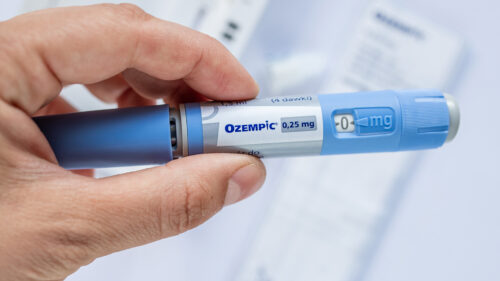India’s booming pharmaceutical sector has a long history of innovation and distributing lifesaving medicines at very affordable costs around the world. Indian Prime Minister Narendra Modi has long hailed India as the “pharmacy to the world.” He is not the only one to crown India with this title. When India sent essential vaccines and medicines to several countries during the coronavirus pandemic, the Indian pharmaceutical industry truly lived up to its name and reputation. Dr. Robert M. Califf highlighted India’s potential in this endeavor, also calling it the “pharmacy to the world.”
On the other hand, new drug shortages in the US have increased by nearly 30% between 2021 and 2022, according to the report “The Health and National Security Risks of Drug Shortages (March 2023)” commissioned by the US Senate. At the end of 2022, drug shortages experienced a record five-year high of 295 active drugs being in short supply.
India’s drug manufacturers have run afoul of US safety standards
India is the world’s largest provider of generic drugs by volume. Over the years, Indian pharmaceutical companies have created trailblazing innovations, especially in getting lifesaving medicines at the most affordable prices to regions across the globe. As many countries turn to India to make the best medicines available to millions around the world, India’s pharmaceutical sector is all set to attain new heights. However, there are still concerns which remain unresolved.
Moreover, in the US, with nearly 32% of generic drugs and 45% of active pharmaceutical ingredients being sourced from India and China, several concerns have been raised that the US heavily relies on sourcing from foreign manufacturers, who often do not meet the expected safety standards.
Other than concerns about the safety regulations in Indian factories, challenges about quality assurance and data integrity still remain. In the past, the United States Food and Drug Administration (FDA) highlighted that India has the lowest percentage of acceptable inspection outcomes at drug manufacturing facilities, when compared to all other countries.
Since India has the highest number of FDA-approved manufacturing plants outside the US, it is fairly typical for the FDA to carry out mandatory planned inspections as well as unannounced investigations. In doing so, most recently in December 2022 after a period of pandemic-related decline in its overseas inspections, the FDA discovered contaminated drugs, unsanitary conditions and shredded paperwork at the manufacturing sites of Intas Pharmaceuticals in Gujarat. These lapses come as India’s pharma industry faces intense scrutiny in light of the global fatalities in Gambia and Uzbekistan linked to cough syrup.
Not only does the Indian pharmaceutical industry run the risk of not meeting the FDA’s required quality standards, but there have also been multiple drug recalls in the US between 2022 and 2023. These include the recall of eye drops, skin ointment for the treatment of various conditions and other capsules from Lupin Pharmaceuticals used in the treatment of tuberculosis, blood pressure, anti-bacterial and pain medication.
The bar of compliance is constantly being raised to improve quality. The FDA has been attempting to collaborate with the Indian government to facilitate access to safe, effective and high-quality medications manufactured in India.
How Indian drug manufacturers raise supply, and lower prices, in the US
Toward converging on mutual interests in August 2023, at the G20 Health Ministers meeting, the US Department of Health and Human Services Secretary Xavier Becerra acknowledged that the US has a very strong and dependent relationship with India for its pharmaceuticals. He also stated that India and the US will collaborate to form an accord for the safety and availability of medicines as well as work towards improving the quality standards of the pharmaceutical industry to meet the US standards for carrying out exports.
In the backdrop of this mutually beneficial relationship of aiming to reduce drug shortages in the US and to improve safety standards, it appears that India is all set to salvage the situation. It can alleviate the shortfall of critical, lifesaving drugs in the US and build its overall reputation of being a reliant supplier of pharmaceuticals everywhere in the world.
Keeping with this projection, Reuters reports that India’s pharmaceutical exports are set to grow nearly twice as fast as last year, to reach an estimated $27 billion in sales, as a result of strong US buying. Further, sales to the US, which represents India’s largest market with 30% of its overall pharma exports, rose 6.2% to $7.5 billion in the last fiscal year. According to Policy Circle, “India’s pharmaceutical exports are expected to reach $28 billion in 2023-24, a remarkable growth of 10.2%.”
An additional factor in favor of Indian pharmaceutical companies is the upcoming patent cliff in the US for top-selling drugs, which is estimated to take place over the next five years. A “patent cliff” is said to occur when a patent expires and the name-brand product thus goes off-patent. Patent expiration is one of the main reasons for the growth of generic drugs — once a pharma patent expires, generic manufacturers are allowed in the market, and they often sell at a lower price than the name-brand drug, which increases competition and gives better choice to consumers in the market. The last patent cliff occurred in the US between 2011 and 2015 when big pharma saw increased growth in generic competition for several large pharmaceutical products.
In addition to pharmaceutical manufacturers, it is anticipated that other players in the Indian pharmaceutical ecosystem will also reap the benefits of a patent cliff. This is because a significant number of US pharma companies will typically look to outsource their non-core activities to emerging markets. It is also anticipated that the patent cliff, along with the need to reduce healthcare costs, will eventually help in the continued growth of the Indian pharmaceutical industry. In turn, a boost in supplies could also help in bringing down the shortages of certain medications in the US and thus aid in the symbiotic relationship between the two countries.
Stakeholders have stressed the need for swift action similar to the rapid response seen in COVID-19 vaccine development. They emphasized global cooperation, clear guidelines for clinical development and engagement with patient advocacy groups as key takeaways from the G20 summit.
If these concerns are addressed by markets in India and if its ability to respond to global market dynamics is enhanced, then India can counter the shortages of generic drugs in the United States and rightfully retain its jeweled crown as the “pharmacy to the world.”
[Will Sherriff edited this piece.]
The views expressed in this article are the author’s own and do not necessarily reflect Fair Observer’s editorial policy.
Support Fair Observer
We rely on your support for our independence, diversity and quality.
For more than 10 years, Fair Observer has been free, fair and independent. No billionaire owns us, no advertisers control us. We are a reader-supported nonprofit. Unlike many other publications, we keep our content free for readers regardless of where they live or whether they can afford to pay. We have no paywalls and no ads.
In the post-truth era of fake news, echo chambers and filter bubbles, we publish a plurality of perspectives from around the world. Anyone can publish with us, but everyone goes through a rigorous editorial process. So, you get fact-checked, well-reasoned content instead of noise.
We publish 2,500+ voices from 90+ countries. We also conduct education and training programs
on subjects ranging from digital media and journalism to writing and critical thinking. This
doesn’t come cheap. Servers, editors, trainers and web developers cost
money.
Please consider supporting us on a regular basis as a recurring donor or a
sustaining member.
Will you support FO’s journalism?
We rely on your support for our independence, diversity and quality.







Comment